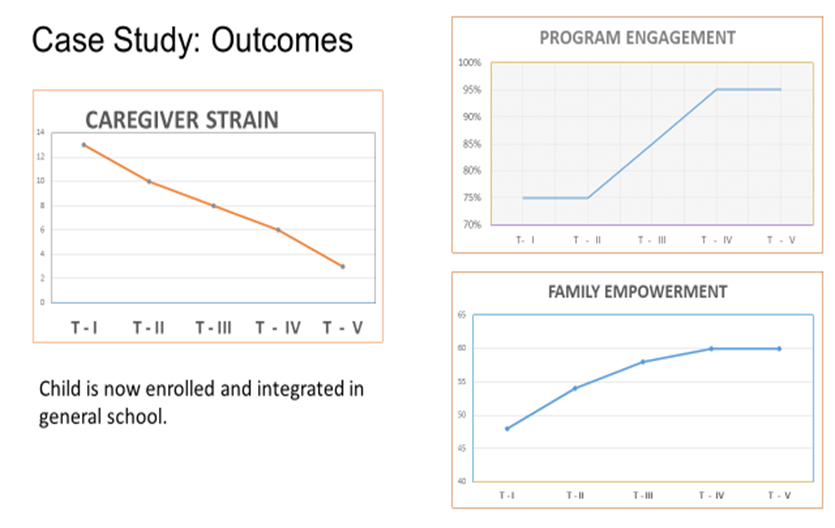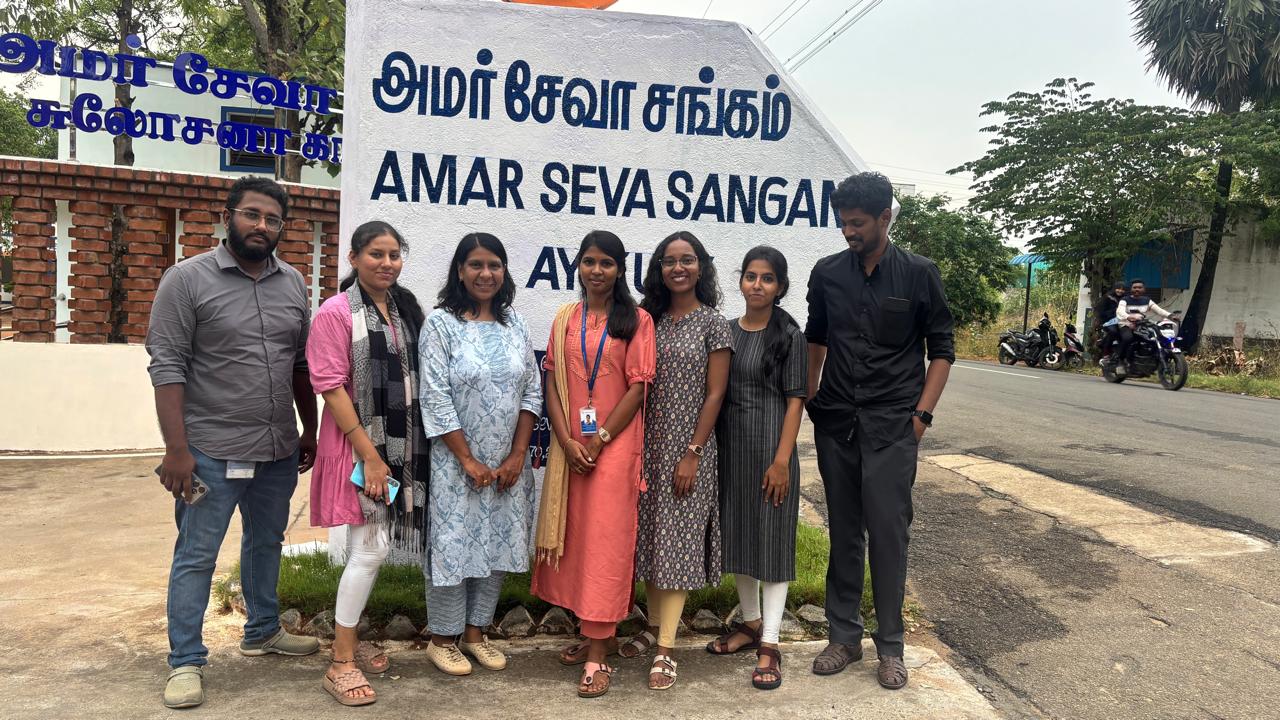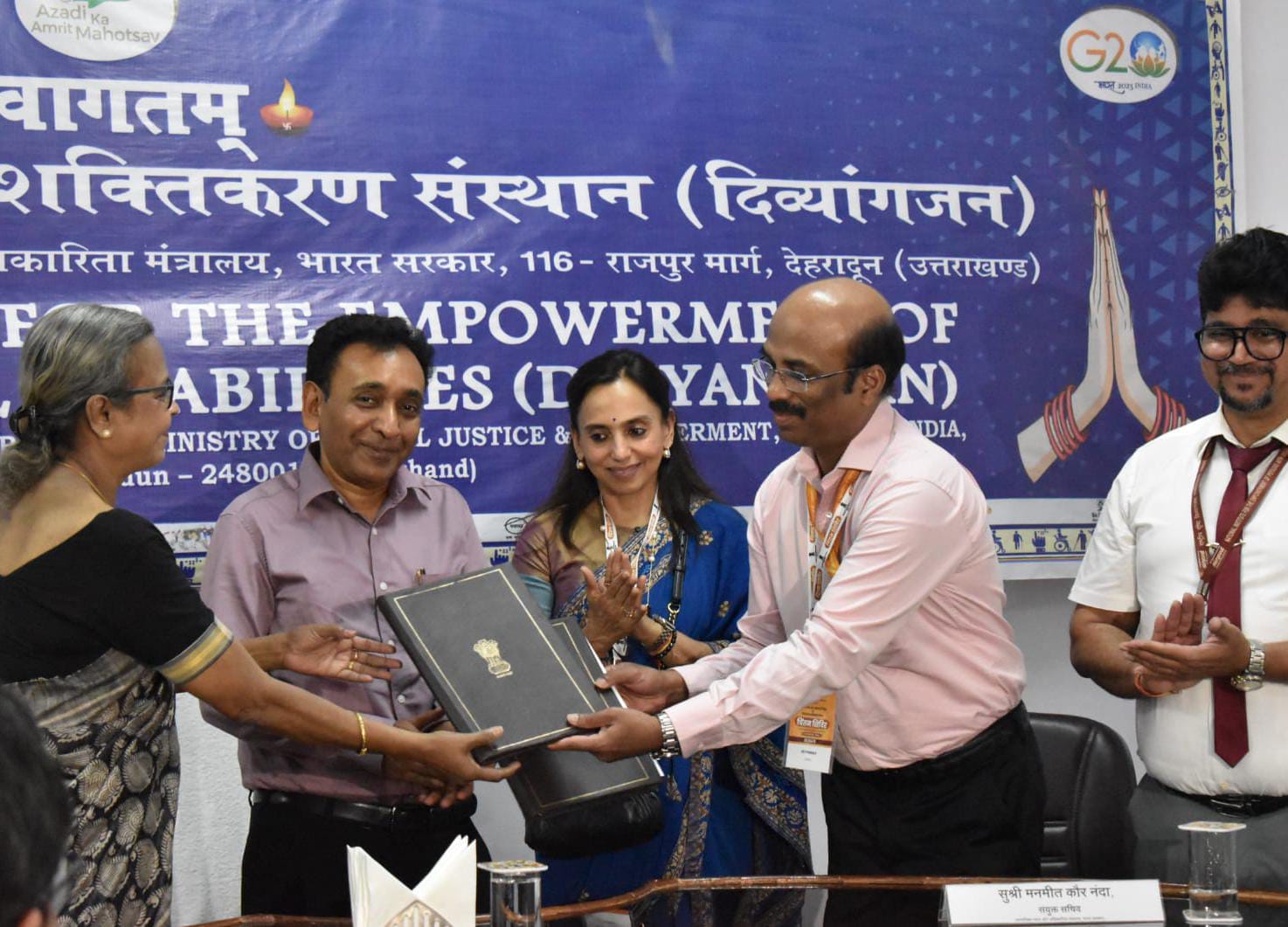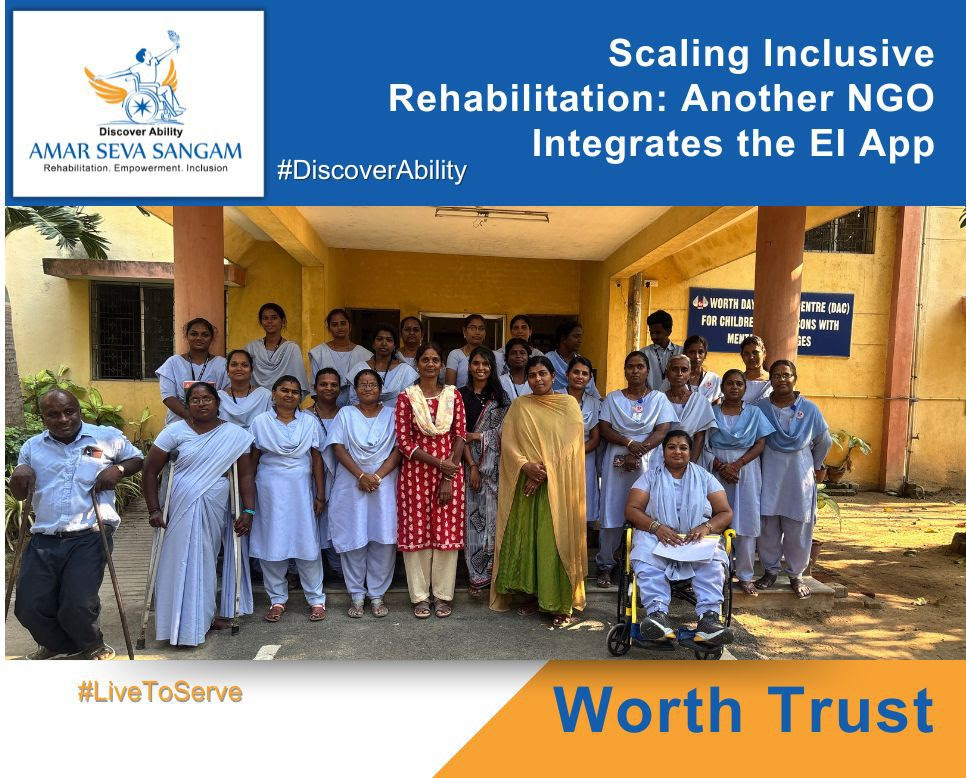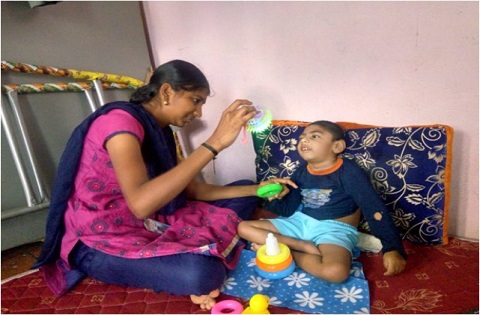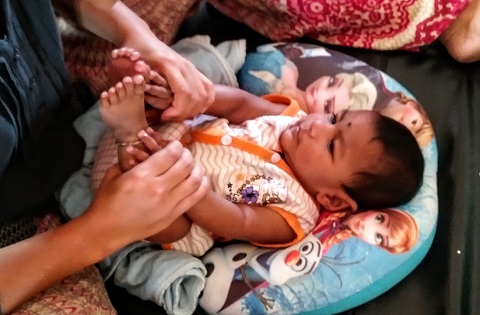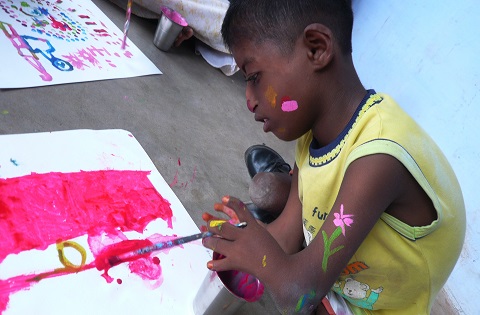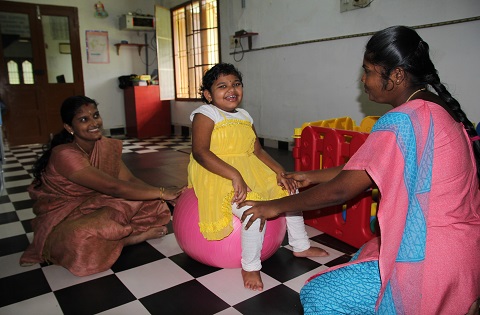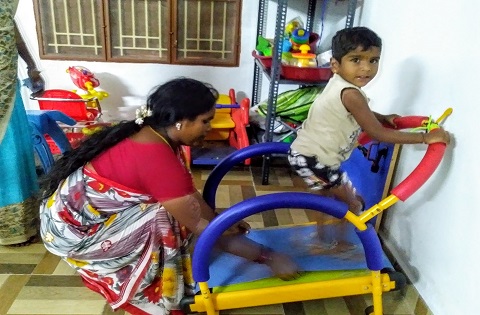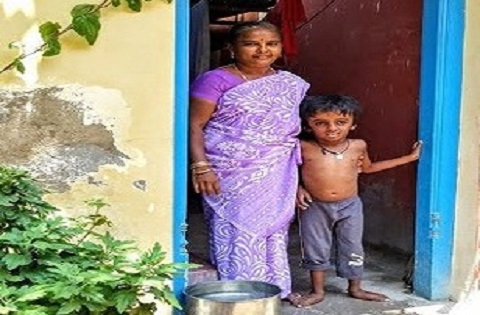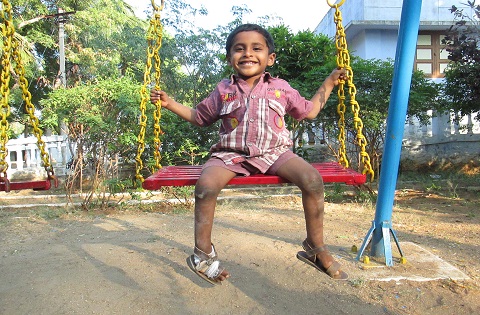
Parvathi was 2.5 years old and was referred to ASSA by local village health nurse. She was diagnosed with intellectual disability. Following initial assessment, the multidisciplinary rehab team at ASSA identified challenges in:
- Activities of Daily Living (ADLs)
- Communication
- Self-care
- Cognition
Parents identified the following goals through COPM at baseline.
- Wear undergarments
- Colour with crayons
- Following simple commands
- Naming 10 common objects
Based on this, goals and treatment plan were co-created between parents and ASSA’s therapists.
| Goal | Treatment |
| Color with a crayon within a given diagram |
|
| Name 10 common objects |
|
| Wearing undergarment |
|
| Follow simple commands |
|
After 6 months, Parvathi showed significant improvement in her development and the COPM was reassessed and the performance and satisfaction scores improved as seen below.
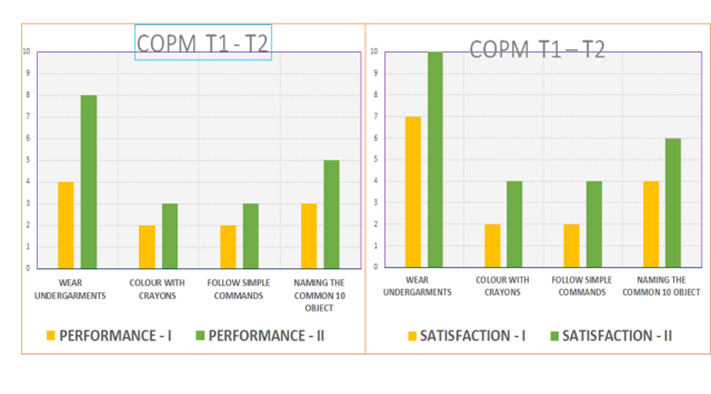
- Wear undergarments
- Speak three letter words
- Counting numbers up to 10
- Trace letters
| Goal | Treatment |
| Counting the numbers up to 10 with object |
|
| Trace the letters |
|
| Speak three letter words |
|

Overall, Paravthi’s family caregiver strain decreased over time, family empowerement and program engagement increased. This case study highlights how a family centred approach with parents setting goals and co-creating plans with therapists, leads to better outcomes.
